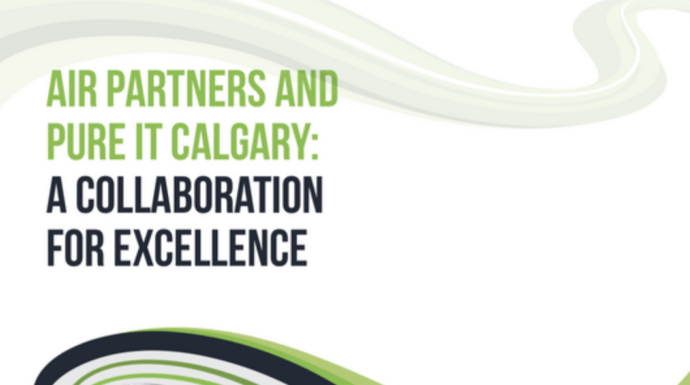What Is The Cyber Threat To The Canadian Oil & Gas Sector? An Overview of Vulnerabilities and Risks
The Canadian oil and gas sector is crucial to the nation’s economy, making it a prime target for cyber threats. Recent reports indicate that state-sponsored groups and financially motivated hackers have increasingly focused on this industry, aiming for disruption, theft, and espionage. Understanding the specific threats your operations face becomes essential for maintaining security and resilience as cyber incidents rise.
In today’s environment, the variety and sophistication of attacks have grown dramatically. From ransomware attacks hindering operations to data breaches jeopardizing sensitive information, the vulnerabilities in your systems can have far-reaching impacts. Staying informed about the current cyber threat landscape allows you to implement effective strategies and safeguard your assets.
Your proactive approach to cybersecurity protects your operations and ensures compliance with regulatory requirements. Exploring partnerships and leveraging emerging technologies can further fortify your defence measures against evolving threats in the sector.
Key Takeaways
- Understanding the cyber threat landscape is vital for the oil and gas sector.
- Regulatory compliance and industry collaboration enhance security measures.
- Adopting new technologies can mitigate future cyber risks.
Overview of the Canadian Oil & Gas Sector
The Canadian oil and gas sector is crucial to the nation’s economy. It significantly impacts your daily life through the energy services it provides, such as heating, transportation, and electricity generation.
This sector contributes approximately $120 billion to Canada’s Gross Domestic Product (GDP). It encompasses petroleum and natural gas exploration, extraction, refining, and distribution.
Key elements of the sector include:
- Oil Sands: Canada has some of the largest oil sand reserves globally, primarily in Alberta.
- Natural Gas: This resource is essential for domestic use and export, particularly to the United States and overseas.
- Refining: Several refineries across Canada process crude oil into various fuels and products.
You should recognize the increasing importance of environmental considerations and sustainability in this industry. Many companies are investing in clean technologies and reducing greenhouse gas emissions.
In addition, the sector faces challenges, including fluctuating prices, regulatory changes, and a growing push for renewable energy sources. The balance between maintaining energy production and meeting environmental goals is increasingly critical for stakeholders in the industry.
Current Cyber Threat Landscape
The cyber threat environment facing Canada’s oil and gas sector is increasingly complex and dangerous. State-sponsored actors are a significant concern, with countries like Russia, China, and Iran actively targeting critical infrastructure.
Key threats include:
- Espionage: Gaining access to sensitive data and operational technology.
- Disruption: Targeting systems to hinder production and distribution.
- Destruction: Initiating attacks that could damage infrastructure and safety systems.
You should be aware that the Canadian Centre for Cyber Security has identified a rise in politically motivated attacks. These threats often correlate with geopolitical tensions, making the sector particularly vulnerable during crises.
Recent Findings from various reports indicate:
- Cyber incidents targeting the oil and gas sector have surged in prevalence.
- The sector contributes approximately $120 billion to Canada’s GDP, underscoring its importance to the nation.
Maintaining cybersecurity resilience is crucial. Regular assessments and updates to security protocols can help mitigate these risks. Engaging with threat intelligence and sharing information within the industry is essential for enhancing overall security posture.
Monitoring trends and adapting to the evolving landscape will assist in safeguarding your operations against these persistent threats.
Specific Threats to the Canadian Oil & Gas Sector
Cyber threats to the Canadian oil and gas sector are diverse and significant. Awareness of these threats is crucial as they can impact operations and security. Below are specific areas of concern.
External Threat Actors
External threat actors are prominent in cyberattacks against the Canadian oil and gas industry. Due to its strategic importance, state-sponsored groups, particularly from nations like Russia and China, focus on this sector. They engage in cyber espionage to steal sensitive data or disrupt operations.
Recent reports indicate that these threats often result from geopolitical tensions. For instance, hackers may infiltrate networks to cause operational disruptions or damage critical infrastructure. As your organization navigates this landscape, it becomes essential to implement robust cybersecurity measures and monitor for suspicious activities.
Insider Threats
Insider threats can be equally damaging. They involve individuals within your organization who may exploit their access to compromised systems. These threats can arise from disgruntled employees or those inadvertently providing access to external actors.
The potential for insider threats highlights the importance of maintaining a culture of security awareness. Regular training and clear protocols can help mitigate risks. By fostering an environment where employees understand the significance of cybersecurity, you can reduce vulnerabilities related to insider actions.
Supply Chain Vulnerabilities
Supply chain vulnerabilities also pose a significant risk to the oil and gas sector. The interconnected nature of operations means that a breach in one area can cascade through vendors and partners, making your organization susceptible to external attacks.
Cybercriminals often target less secure links in the supply chain to gain access to larger, more secure entities. This risk underlines the necessity for thorough vetting of third-party vendors and ongoing risk assessments. Ensuring your supply chain partners adhere to stringent cybersecurity practices is vital for protecting your operations.
Impact of Cyber Threats on Operations
Cyber threats pose significant risks to Canadian oil and gas sector operations. The repercussions can be immediate and extensive, impacting various business dimensions, from daily functions to long-term viability. Understanding these impacts is crucial for effective risk management.
Operational Disruption
Cyber attacks can lead to substantial operational disruptions. For example, ransomware attacks may lock you out of critical systems, halting production. If operational technology is compromised, control over drilling or refining processes could be lost, causing delays in output.
In some cases, attackers may introduce malicious software that disrupts facility communications. This can lead to inefficient emergency responses, increasing the likelihood of accidents. The resulting downtime affects immediate productivity and can lead to cascading supply chain issues.
Financial Losses
The financial ramifications of a cyber incident can be staggering. Direct costs include system restoration, incident response, and potential ransom payments. Beyond immediate expenses, you may face significant losses from production downtime, which translates into lost revenue.
Moreover, increased cyber insurance premiums can affect your bottom line over time. A single severe incident can lead to immediate financial strain and long-term financial instability, affecting investment opportunities and market competitiveness.
Reputational Damage
Cyber incidents can severely damage your organization’s reputation. Customers and stakeholders may lose trust in your ability to secure sensitive information or maintain operational integrity. The fallout can extend to lost contracts and partnerships if a breach involves customer data.
The negative publicity surrounding a cyber incident can linger, affecting customer perception for years. Rebuilding your reputation requires substantial effort and investment, diverting resources from core business activities to public relations and customer assurance efforts.
Safety and Environmental Risks
Cyber threats can also introduce significant safety and environmental risks. If cyber attackers gain control over critical safety systems, they may create hazardous situations that could lead to spills, leaks, or explosions. This not only endangers lives but also has severe environmental consequences.
Additionally, regulatory compliance can be jeopardized following a cyber incident. If your operations are disrupted and safety protocols fail, you may face fines and increased scrutiny from regulatory agencies. The impact on community relations can also be profound, further complicating your operational landscape.
Regulatory and Compliance Considerations
In Canada’s oil and gas sector, adherence to regulatory frameworks and compliance with standards are critical for safeguarding against cyber threats. These guidelines ensure that companies are prepared to manage risks effectively while maintaining operational resilience.
National Cyber Security Strategy
The National Cyber Security Strategy outlines Canada’s strategic approach to enhancing national cybersecurity resilience. As part of this strategy, your organization should implement cybersecurity measures that align with federal objectives.
Key components include:
- Risk Management: Conduct regular assessments to identify oil and gas sector vulnerabilities.
- Public-Private Partnership: Engage with government initiatives to improve information sharing about threats.
- Training and Awareness: Develop employee training programs focused on cybersecurity risks and responsibilities.
You must integrate these elements into your daily operations for compliance and better protection against cyber incidents.
Critical Infrastructure Protection Standards
Compliance with Critical Infrastructure Protection Standards is essential for securing vital assets in the oil and gas industry. These standards help establish a baseline for cybersecurity measures.
Considerations include:
- Framework Adoption: Implement frameworks like NIST or ISO 27001 to guide your cybersecurity practices.
- Regular Audits: Schedule audits to ensure standards adherence and identify areas for improvement.
- Incident Response Plans: Develop and test incident response plans to ensure a swift and effective reaction to potential breaches.
Following these standards strengthens your organization’s security posture against evolving cyber threats.
Cyber Defence Strategies for the Sector
Effective cyber defence strategies are essential for mitigating growing cyber threats in the Canadian oil and gas sector. Focused approaches in risk assessment, cybersecurity frameworks, incident response, and employee training help ensure you are prepared to handle potential security incidents.
Risk Assessment and Management
Conducting thorough risk assessments is your first step in safeguarding operations. You can prioritize risks effectively by identifying vulnerabilities in systems, networks, and processes.
Utilise tools and methodologies for evaluating potential threats and their impacts. Consider factors such as:
- Data sensitivity
- Operational continuity
- Regulatory requirements
Regular reviews and updates of your risk management strategies will help you adapt to the evolving cyber threat landscape. Employing a proactive posture enables you to strengthen your defences before incidents occur.
Implementation of Cybersecurity Frameworks
Adopting industry-standard cybersecurity frameworks like the NIST Cybersecurity Framework or ISO/IEC 27001 can help standardize your defense mechanisms. These frameworks provide a structured approach to managing your cybersecurity risks.
Key components include:
- Identify: Understand your assets and threats.
- Protect: Implement safeguards to limit exposure.
- Detect: Continuously monitor for anomalies.
- Respond: Develop plans for addressing incidents.
- Recover: Ensure timely restoration of operations.
Integrating these frameworks into your operational practices strengthens your infrastructure and builds resilience against attacks.
Incident Response and Recovery Planning
A well-defined incident response plan is vital for minimizing the impact of cyber incidents. This plan should outline your procedures for detecting, responding to, and recovering from a cyber attack.
Essential steps include:
- Preparation: Define roles and responsibilities for your cybersecurity team.
- Detection: Implement monitoring tools to identify breaches quickly.
- Containment: Limit further damage by isolating affected systems.
- Eradication: Remove threats and vulnerabilities from your networks.
- Recovery: Restore systems and services to normal operations.
Regularly test your incident response plan through tabletop exercises to ensure effectiveness and make necessary adjustments.
Employee Training and Awareness
Your workforce plays a critical role in maintaining cybersecurity. A robust training program is essential for elevating employee awareness about potential threats.
Key elements include:
- Phishing simulations: Train employees to recognize and report suspicious emails.
- Best practices: Educate about password management and data handling protocols.
- Ongoing education: Regular updates on new threats and trends in cybersecurity.
Promoting a culture of security consciousness empowers personnel to protect their organization against cyber threats proactively.
Collaborations and Partnerships
The Canadian oil and gas sector relies on various collaborations and partnerships to enhance cybersecurity. Engaging with industry consortiums, government entities, and international partners strengthens resilience against cyber threats, ensuring a safer operational environment.
Industry Consortiums
Several industry consortiums are dedicated to improving cybersecurity practices in the oil and gas sector. These groups facilitate knowledge sharing, best practices, and collaborative research. Members gain access to resources like threat intelligence reports and training programs tailored to the sector’s unique challenges.
Participating in these consortiums helps organizations understand emerging threats and vulnerabilities. Collaboration can lead to the development of common standards and protocols, enabling better communication and response strategies among companies.
Government Partnerships
Your organization benefits significantly from partnerships with government agencies. The Canadian Centre for Cyber Security is vital in fusing public resources with private sector needs. It provides guidance, threat assessments, and technical support to bolster the cybersecurity posture of critical infrastructure sectors, including oil and gas.
Additionally, initiatives like the National Cyber Security Strategy encourage collaboration between businesses and governmental bodies. These partnerships allow for joint exercises, workshops, and outreach programs. You can leverage such partnerships to stay informed on the latest cyber threats and mitigation techniques.
International Cooperation
The dynamic nature of cyber threats necessitates international cooperation. Cybercriminals often operate across borders, making it crucial for Canadian organizations to collaborate with foreign governments and international organizations. You can engage in intelligence-sharing platforms and joint response initiatives that span various countries.
International partnerships may also lead to harmonized cybersecurity standards and frameworks. These coordinated efforts enhance your organization’s ability to address global threats that target the oil and gas sector. You can adopt best practices and learn from their experiences by staying connected with international counterparts.
Emerging Technologies and Future Threats
Emerging technologies introduce opportunities and vulnerabilities as the oil and gas sector evolves. Understanding these technologies and their associated threats is crucial for safeguarding your operations.
Internet of Things (IoT)
The Internet of Things (IoT) connects various devices and systems, enabling real-time monitoring and data exchange. While this enhances operational efficiency, it exposes your infrastructure to cyber threats.
Key Vulnerabilities:
- Device Insecurity: Many IoT devices lack robust security features, making them easy targets for hackers.
- Data Interception: Sensitive operational data transmitted over networks can be intercepted by malicious actors.
To mitigate risks, ensure that all IoT devices are routinely updated and secured with strong authentication. Implementing network segmentation can also prevent attackers from quickly navigating through your systems.
Artificial Intelligence (AI)
Artificial Intelligence (AI) has the potential to revolutionize resource management and predictive maintenance in the oil and gas industry. However, it also raises significant cybersecurity concerns.
Risks Involved:
- Adversarial Attacks: Hackers can manipulate AI systems to produce faulty predictions or recommendations.
- Automated Threats: Using AI in offensive cyber operations could lead to more sophisticated and targeted attacks.
Strengthening AI systems with robust algorithms and training on diverse datasets can help minimize these risks. Additionally, continuous monitoring of AI-generated outputs is essential for detecting anomalies.
Blockchain Technology
Blockchain technology offers transparency and security in transactions, which can be particularly beneficial for supply chain management in the oil and gas sector. Despite its advantages, blockchain is not immune to threats.
Threat Factors:
- Smart Contract Vulnerabilities: Flaws in smart contracts can be exploited to execute unauthorized transactions.
- 51% Attacks: If a single entity gains control of most of the network, it can manipulate transaction histories.
Utilizing established frameworks and conducting thorough audits of smart contracts can enhance security. Training your workforce on blockchain technology’s potential vulnerabilities is vital for safeguarding your operations.
How Pure IT Protects The Canadian Oil & Gas Security From Cyber Threats
Pure IT offers specialized cybersecurity solutions tailored to the oil and gas sector’s needs. With cyber threats becoming increasingly complex, robust protection is crucial for your operations.
Key services provided include:
- Managed Detection and Response (MDR): Continuous real-time monitoring to identify and respond to threats.
- Custom Security Solutions: Tailored strategies that address the unique challenges of your infrastructure.
The integration of advanced technologies is essential. Pure IT implements innovative measures that extend beyond traditional IT security. This ensures that both operational systems and valuable intellectual property are protected.
Regular risk assessments identify vulnerabilities in your systems. These assessments help formulate a proactive approach to cybersecurity, enhancing your resilience against potential attacks.
In recent years, cyber threat actors have paid increased attention to the oil and gas sector. Pure IT’s comprehensive strategies significantly reduce the potential impact of these threats.
By utilizing some of the industry’s best practices, you ensure that your operations maintain integrity and continuity. This safeguards your assets and builds trust with clients and stakeholders.
Your commitment to cybersecurity is critical in this evolving landscape, and partnering with Pure IT positions you for long-term success.












